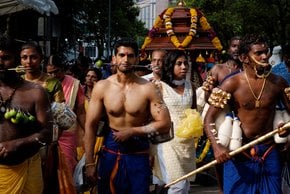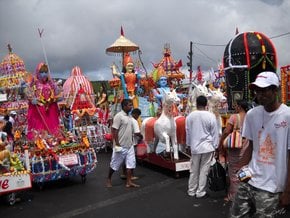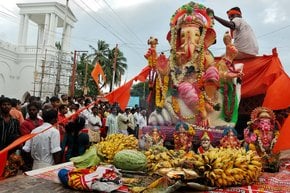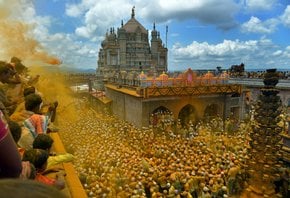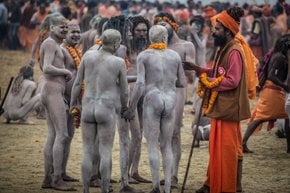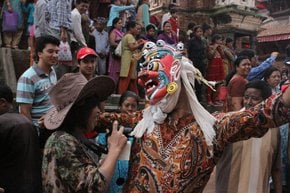Ganesh Chaturthi Festival 2024 in Mauritius
Once a year all of Mauritius celebrates Ganesh Chaturthi—the birthday of the youngest son of Hindu gods Shiva and Parvati, Ganesha
Dates: September 8, 2024
In Mauritius, amidst its diverse ethnicities and religions, Hinduism stands as the predominant faith. Celebrated fervently by the local Marathi community, Ganesh Chaturthi is among the island's oldest and most cherished annual festivals, spanning ten days. The festival commences with devotees bringing home clay statues of Lord Ganesha, adorning them with offerings and heartfelt worship. As the festival draws to a close, these statues are ceremoniously immersed in water, symbolizing Lord Ganesha's return to his natural element. This ritual marks his departure with the belief that he will return to bless Mother Earth the following year.
Main Celebrations
During Ganesh Chaturthi in Mauritius, the island buzzes with lively processions featuring large Ganesh statues, accompanied by music and dancing, especially prominent in the southwest where the Marathi community congregates. The highlight is the grand procession at Flic-en-Flac beach, where statues are immersed in water, a cherished tradition. Meanwhile, towns like Vacoas-Phoenix, Grand Baie, and Cascavelle host their vibrant celebrations. Devotees begin their preparations ten days ahead, performing morning prayers and offering coconuts and sweet treats to honor the deity, adding to the spiritual hunger for the occasion.
The Procession
On this auspicious day, Hindu devotees joyously dance and chant to the rhythmic beats of drums, accompanied by the melodious sounds of cymbals and bells. They carry brightly colored clay statues of Lord Ganesh, adorned with red paste and vibrant yellow and red flowers, towards the water. This ritual, known as Ganesh Visarjan, marks the immersion of the small idols of the elephant-headed deity. As they chant "Ganapati Bappa Morya," devotees bid farewell to Ganesha, believing he takes away their troubles and showers blessings upon them. The immersion symbolizes Ganesha's gradual disappearance into the water, his remains gently settling beneath the surface, signifying the cycle of life and renewal.
Origins of Ganesh Chaturthi Festival
The story of Ganesha's birth and how he acquired his elephant head is both intriguing and deeply symbolic in Hindu mythology. According to the legend, Ganesha was created by Parvati, who fashioned him from the dough and brought him to life. She entrusted him with guarding her door, not knowing that he would prevent even Shiva, her husband and the supreme Hindu god, from entering. When Shiva, unaware of Ganesha's identity, attempted to enter and was obstructed, a fierce battle ensued in which Shiva, in a fit of rage, severed Ganesha's head.
Upon realizing Ganesha's true identity and the extent of Parvati's sorrow, Shiva promised to bring their son back to life. He instructed his followers to bring him the head of the first creature they encountered facing north, symbolizing wisdom. This creature happened to be an elephant, and so Ganesha was revived with an elephant head, symbolizing wisdom, strength, and auspiciousness. Since 1986, Ganesh Chaturthi has been observed on the island, commemorating the birth of Ganesha with festivities that celebrate his qualities of wisdom, prosperity, and overcoming obstacles.









